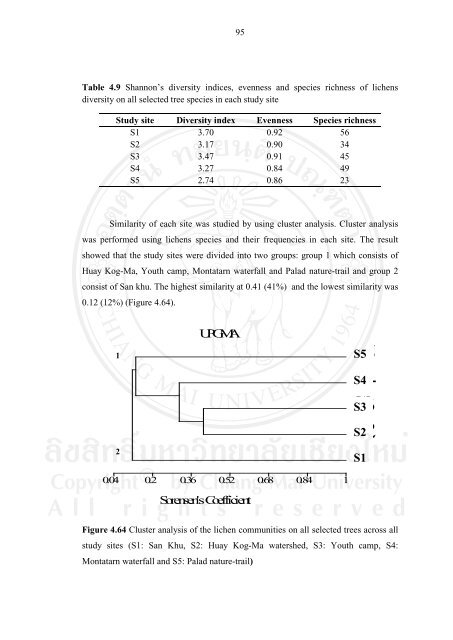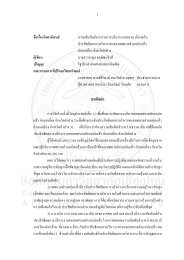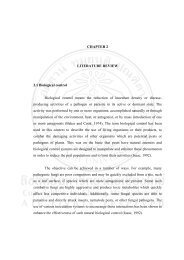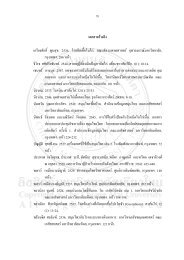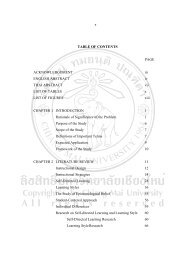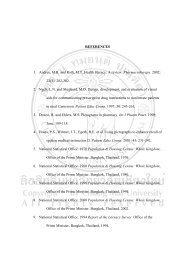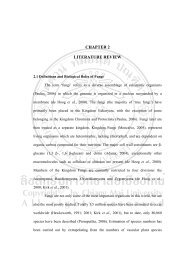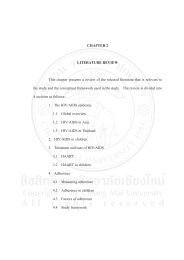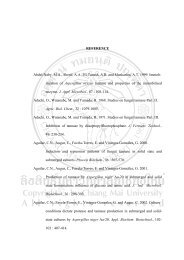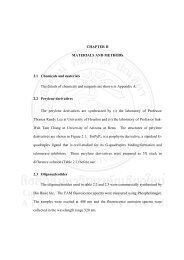34 CHAPTER 4 RESULTS 4.1 Lichen diversity Epiphytic lichens ...
34 CHAPTER 4 RESULTS 4.1 Lichen diversity Epiphytic lichens ...
34 CHAPTER 4 RESULTS 4.1 Lichen diversity Epiphytic lichens ...
You also want an ePaper? Increase the reach of your titles
YUMPU automatically turns print PDFs into web optimized ePapers that Google loves.
95<br />
Table 4.9 Shannon’s <strong>diversity</strong> indices, evenness and species richness of <strong>lichens</strong><br />
<strong>diversity</strong> on all selected tree species in each study site<br />
Study site Diversity index Evenness Species richness<br />
S1 3.70 0.92 56<br />
S2 3.17 0.90 <strong>34</strong><br />
S3 3.47 0.91 45<br />
S4 3.27 0.84 49<br />
S5 2.74 0.86 23<br />
Similarity of each site was studied by using cluster analysis. Cluster analysis<br />
was performed using <strong>lichens</strong> species and their frequencies in each site. The result<br />
showed that the study sites were divided into two groups: group 1 which consists of<br />
Huay Kog-Ma, Youth camp, Montatarn waterfall and Palad nature-trail and group 2<br />
consist of San khu. The highest similarity at 0.41 (41%) and the lowest similarity was<br />
0.12 (12%) (Figure 4.64).<br />
1<br />
2<br />
UPGMA<br />
0.04 0.2 0.36 0.52 0.68 0.84 1<br />
Sorensen's Coefficient<br />
S5<br />
S4<br />
S3<br />
S2<br />
S1<br />
Figure 4.64 Cluster analysis of the lichen communities on all selected trees across all<br />
study sites (S1: San Khu, S2: Huay Kog-Ma watershed, S3: Youth camp, S4:<br />
Montatarn waterfall and S5: Palad nature-trail)


